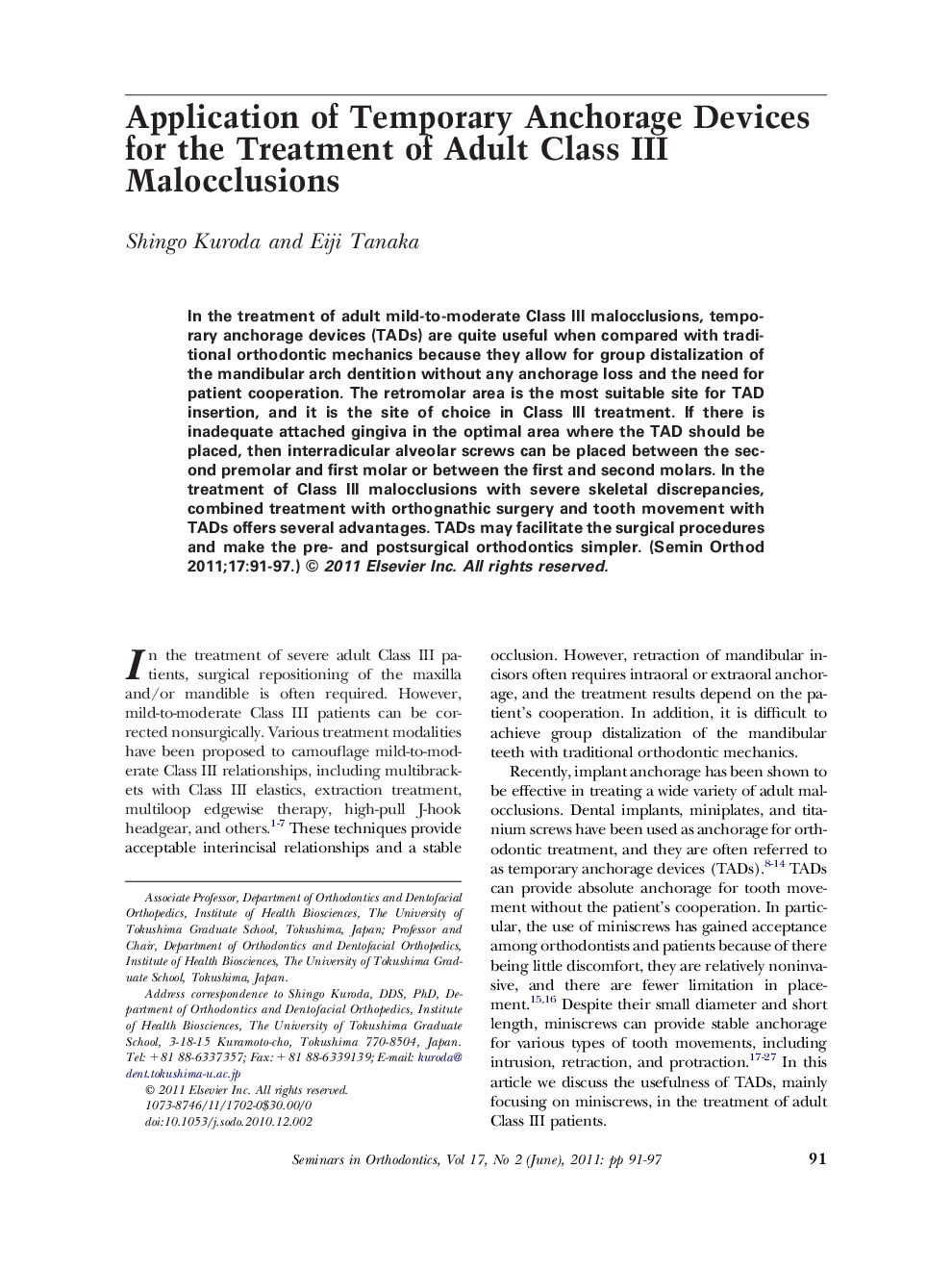| Article ID | Journal | Published Year | Pages | File Type |
|---|---|---|---|---|
| 3175652 | Seminars in Orthodontics | 2011 | 7 Pages |
In the treatment of adult mild-to-moderate Class III malocclusions, temporary anchorage devices (TADs) are quite useful when compared with traditional orthodontic mechanics because they allow for group distalization of the mandibular arch dentition without any anchorage loss and the need for patient cooperation. The retromolar area is the most suitable site for TAD insertion, and it is the site of choice in Class III treatment. If there is inadequate attached gingiva in the optimal area where the TAD should be placed, then interradicular alveolar screws can be placed between the second premolar and first molar or between the first and second molars. In the treatment of Class III malocclusions with severe skeletal discrepancies, combined treatment with orthognathic surgery and tooth movement with TADs offers several advantages. TADs may facilitate the surgical procedures and make the pre- and postsurgical orthodontics simpler.
